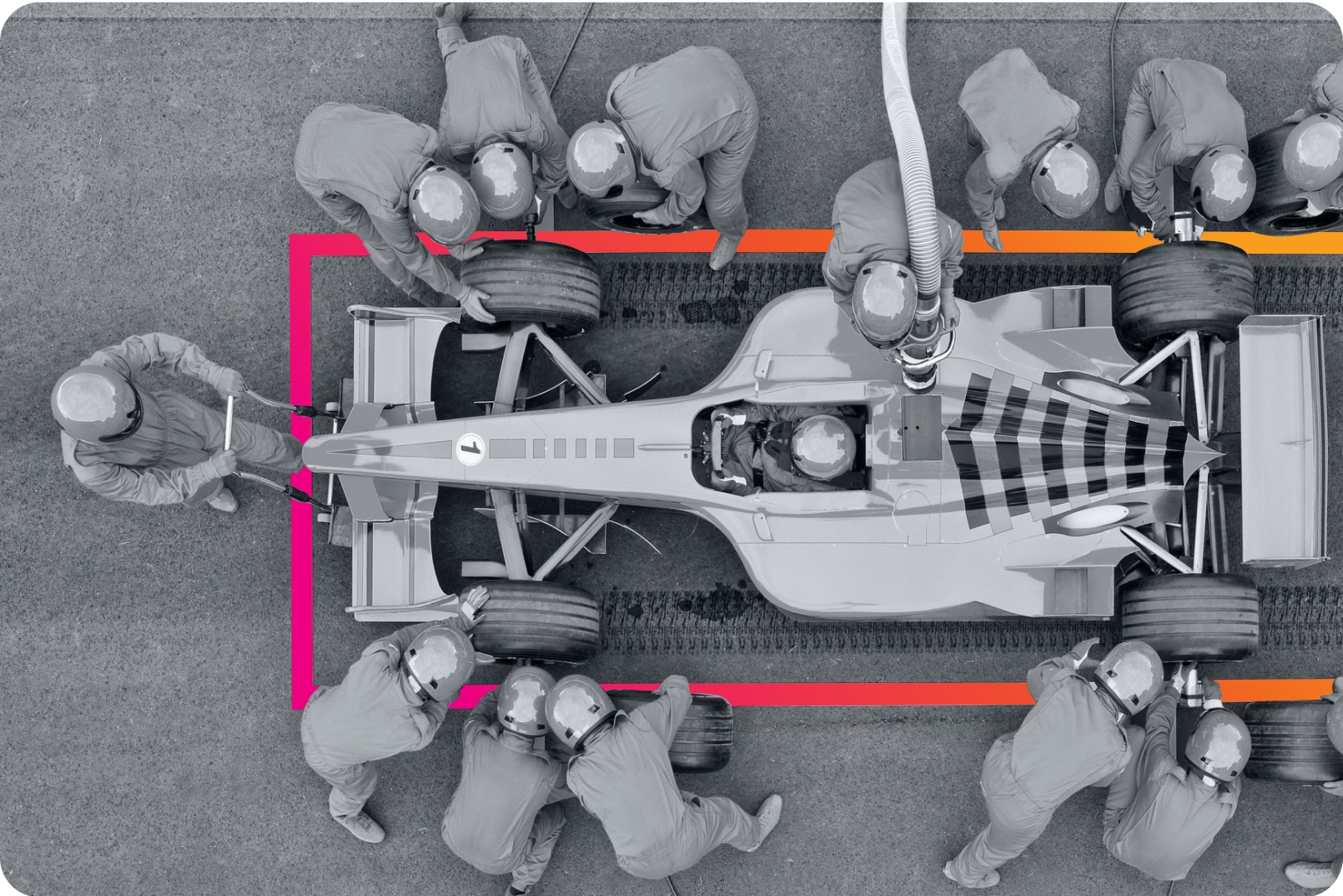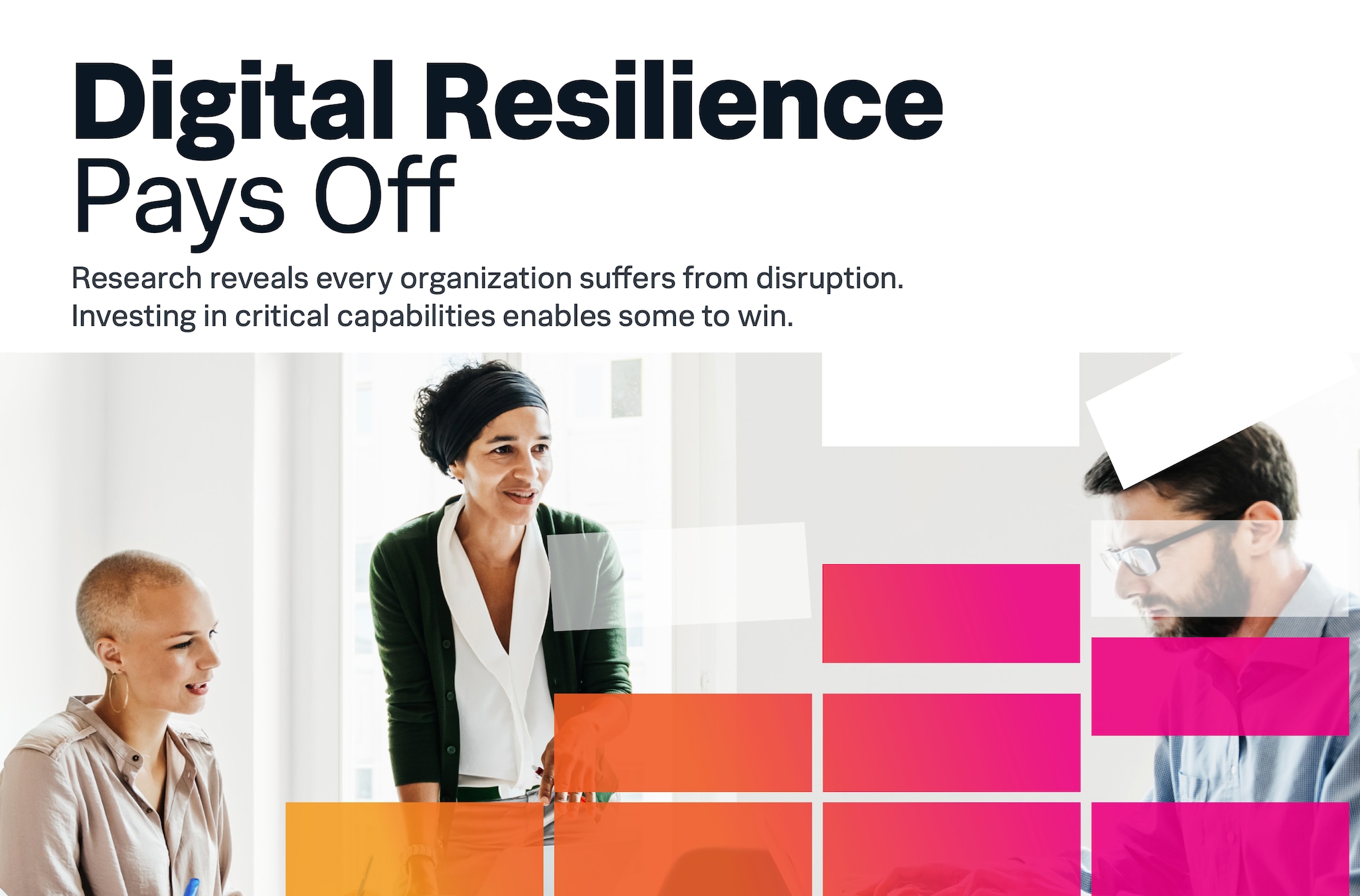Surprising Lessons Technical Leaders Can Learn From Pit Crews

Even if you’re not a fan of Formula 1 racing, you’ll have seen a pit crew in action. Take a moment and think of five factors that you think makes a pit crew successful.
Did “matching outfits” make the list? Unlikely. You probably instantly thought of things like: collaboration, communication, practice, the right tooling, a sense of urgency, getting out of each other’s way, and a shared purpose.
Most of that is self-explanatory. But there are crucial factors that are not on that list — ones you probably missed — which are precisely the things that executives leading technical teams can learn from the most. But before enumerating that list, let’s dig into that shared purpose.
What is the shared purpose of a pit crew, that thing they are all focusing on? To change the tyres as quickly as possible? To make the car go faster? To keep the driver safe? Yes, it’s all of these, but they share a much bigger purpose: to get their team on the podium. Even though they all have specialisms, they think bigger than their specific task, focusing on the success of the whole enterprise, rather than just their piece of the puzzle.
But the factors for pit crew success that you didn’t list are precisely the lessons that matter. Now, let's learn from the success factors that you didn't list.
What you didn’t think of
The reason that I’m confident you didn’t think of these things is because I’ve run this exercise with technical leaders all over Europe. So far, no one has ever said:
1. A strict adherence to, and love of, regulation
2. Periodicity of feedback (not just per-lap, but per-race and per-season)
3. Listening to the driver (or user) feedback.
So let’s take these one by one, and figure out what we have to learn from the pit crew beyond being a great team.
In pole position: regulation
F1 is one of the most regulated sports in the world, with the aim of making the sport fairer, safer and ultimately more entertaining. But you never hear the pit crew grumbling about the regulation they have to work with, do you?
In fact, F1 teams use regulation as a catalyst for innovation; the constraints placed on the team force them to think differently and change things from the previous season. And by tightly bounding the problem space, the team stays laser-focused on their scope for change. And the team that can best innovate within the regulation has a leading advantage.
If that sounds too removed from your regulation day-to-day difficulties, I challenge you to shift your mindset. When dealing with compliance, actively seek opportunities to innovate, and be a leader — not a follower — in the field.
Second on the podium: periodicity
Per-lap: In an F1 race, some changes are planned, but most aren’t. Conditions can change in an instant, from weather to obstacles on the track. And there’s just one opportunity per-lap to make the call for a pit stop, so how and when do you decide what to do? Choosing this well forms a crucial part of any team’s race strategy.
Per-race: Each race is preceded by a qualifier and practice runs. Qualifiers are taken incredibly seriously; they decide the position for the real race, which can be a huge strategic advantage. But it is also a stress test for the car, team and driver, whereas practices are the time to take more risks. These different stages are important because they prepare the team and the car for the starting line on race day.
Per-season: About 80% of the racing car may be different by the end of the season. During and in-between races, teams find efficiencies and changes to make before the next race, and they do this after every race.

Periodicity of feedback
Third over the line: users
Drivers trust their pit crew, but as a user, they are the only one who can tell the engineering team “how it feels” in the car, drawing on their years of experience. They are the one pushing the car to its limits, and they are accountable. It’s the driver who ends up on the podium (or doesn’t), so the driver has the final say. Let me say that again, because it’s pretty surprising — even if the crew is asking the driver to stop, giving advice and data to take a particular action, it’s still the driver’s call on what to do, and the pit crew has to adapt and respond.
When will the P(IT) crew analogy begin?
Here it is! IT teams and leaders can learn a lot from the way pit crews run. Can you imagine:
- A bigger shared purpose than just your local focus?
- Everyone in your team loves regulatory constraints, because it’s a catalyst to innovate?
- Different and deliberate periodicities of feedback, because it aids understanding, optimises readiness for intervention, and informs changes and improvements?
- Users having the final say? And it’s periodically checked that user needs are being met (weekly, ongoing, or at the end of the season financial year.)
- Your team wearing matching outfits?
OK, maybe not that last one. But the other four are valid! Let me explain.
1. A bigger shared purpose
The pit crew isn’t just about tyres, and your team isn’t just about technology. Giving your team permission to think bigger means better outcomes for the business and a more motivated team, with an understanding and ability to communicate how they contribute to the wider success of the business. Any win is their win too, and knowing your team’s business links will help you in the boardroom too.
2. Regulatory constraints
Imagine if you, as a leader, see regulation as a chance to innovate, to differentiate, rather than as a horrendous burden. Your team loves the fact they have guidelines to work with and targets to meet. Your compliance team works closely with your engineering teams and analysts to give you a competitive edge and achieve your shared purpose.
Never waste a good piece of regulation. European technical leaders like you have got plenty of options — with DORA, NIS2 and the UK’s Telecommunications Security Act all coming your way. Reach out to your compliance teams, to understand and work with, rather than against, the changes on the horizon.
Giving your team permission to think bigger means better outcomes for the business and a more motivated team.
3. Periodicity of feedback and changes
Could you be in a state where your team is thoughtful and deliberate about feedback cycles, building them into processes from the start? Change the mindset so that feedback is sought, constructive and expected, not something to criticise and demoralise. Team interventions, based on regular checkpoints, result in a shared self-driven strategy of what, and when, to change.
4. Users in the race
Give users the lead input on feature development, upgrades or usage of the platform. At this point, many leaders literally shudder — an actual physical reaction to the idea, citing the Henry Ford quote: “If I had asked people what they wanted, they would have said faster horses.” I understand that. They’re saying that users don’t know the needs of the system, like security patches or capacity limits. And I agree that these things are important! But work with your users to get buy-in for your new innovation, to explain why patching is worth that outage time, or to understand why the current capacity limits aren’t enough. Or even better, find the best way to make changes in partnership with those who will be using that system daily. Users have the final say anyway, as they will leave the service, stop using it, or complain loudly, so you should bring them along from the start.
In F1, you have constant radio comms to give the driver an opportunity for their input. Do you create the same opportunities for your users? And what’s the periodicity of getting that feedback? Choose your product owners wisely; make sure that they are listening and being an advocate for users. You and they both know that users are smart and are always telling you something about the system.
What to do now
- Regulation: Reframe your regulation and compliance challenges as an opportunity to innovate, and give your organisation the competitive edge. Be a leader, not a follower.
- Periodicity: Be ruthless to ensure the right-time feedback cycles and give regular check-ins on deployed technology. Start with “what is right-time?” Challenge if second-by-second information would truly change the decision or affect the outcome, if it will help to align your operations teams, or if it will just overwhelm them.
- Users: Value your users and talk to them often. Even the annoying ones. Especially the annoying ones! Create open and effective communications, like a pit crew has with a driver. Invest in these relationships; the information you get from them is so, so valuable.Purpose: Give your team understanding of their wider shared purpose, and give them permission to learn and understand the business value that they bring. (Hint: this may involve talking to users! What a virtuous cycle.)
And maybe leave the matching outfits to the pit crew.
Related Articles
About Splunk
The world’s leading organizations rely on Splunk, a Cisco company, to continuously strengthen digital resilience with our unified security and observability platform, powered by industry-leading AI.
Our customers trust Splunk’s award-winning security and observability solutions to secure and improve the reliability of their complex digital environments, at any scale.


